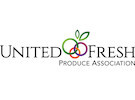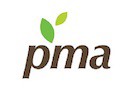On September 18th the President and U.S. Secretary of Agriculture Sonny Perdue announced up to an additional $14 billion dollars for agricultural producers who continue to face market disruptions and associated costs because of COVID-19. Coronavirus Food Assistance Program (known as ‘CFAP 2’) provides financial assistance that gives producers the ability to absorb increased marketing costs associated with the COVID-19 pandemic. In a change from the previous program, payments will be based on revenue from 2019 crops. Signup for the Coronavirus Food Assistance Program will begin September 21st and run through December 11, 2020.
CFAP 2 payments will be made for three categories of commodities – Price Trigger Commodities, Flat-rate Crops and Sales Commodities. Specialty crops, floriculture and nursery crops will only be eligible for the Sales Commodity portion.
Sales commodities include specialty crops; aquaculture; nursery crops and floriculture. Payment calculations will use a sales-based approach, where producers are paid based on five payment gradations associated with their 2019 sales.
Additional commodities are eligible in CFAP 2 that weren’t eligible in the first iteration of the program. A complete list of eligible commodities, payment rates and calculations can be found here.
There will continue to be a payment limitation of $250,000 per person or entity for all commodities combined. Applicants who are corporations, limited liability companies, limited partnerships may qualify for additional payment limits when members actively provide personal labor or personal management for the farming operation. In addition, this special payment limitation provision has been expanded to include trusts and estates for both CFAP 1 and 2.
Producers will also have to certify they meet the Adjusted Gross Income limitation of $900,000 unless at least 75 percent or more of their income is derived from farming, ranching or forestry-related activities. Producers must also be in compliance with Highly Erodible Land and Wetland Conservation provisions.
“We want to thank Secretary Perdue and USDA for including fruit and vegetable producers in CFAP 2.0 and making changes to the current program that will allow for a more streamlined and efficient program for our members,” said Robert Guenther, Senior Vice President of Public Policy for United Fresh. “Since the inception of the CFAP program, we have had some very candid and direct conversations with USDA on how to improve access for our members and this new program hits the mark. We will now turn our attention to education and outreach to the fresh produce industry to ensure that all eligible growers will apply.”
USDA Secretary Sonny Perdue will discuss this new program during his keynote presentation at the United Fresh Washington Conference on Tuesday, September 22 at Noon EDT. To register for the conference, visit www.unitedfresh.org.
 For more information:
For more information:
Mary Coppola
United Fresh Produce Association
Tel: +1 (202) 303-3406
Email: [email protected]
www.unitedfresh.org
 Richard Owen
Richard Owen
Produce Marketing Association
Email: [email protected]
www.pma.com
